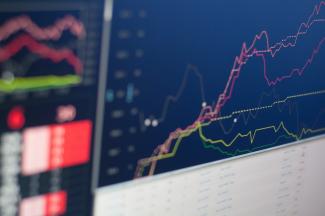
Market Update for April 26, 2022
Think of the economy like a boat, and the job of the Federal Reserve at this point is to pull the boat ashore. The boat is floating of its own accord just 10 feet from the dock, but the problem is we have 40 feet of rope dangling down into the water. So to reel in the boat physically we have to pull 40 feet of rope, not just 10, where the first 30 feet of pulling essentially don’t do anything other than to get us to the last 10 feet that matter.
That is the predicament for the Fed right now, as they are legions behind the market and inflationary pressures in the economy, so the first several rate increases will do next to nothing to stem the overheating economy, or, nothing to move the boat towards the dock. 0.25% rate increases have long been the norm when the Fed decides to make a change. Not only is the market now expecting a 0.50% rate increase at the May 4, 2022 meeting, but 0.75% rate increases have been hinted at for meetings thereafter. The last time the Federal Reserve raised rates 0.75% in a single action was 1994! Something like 2.50% in total rate increases, from here, are now expected through year-end, and the Fed Funds’ rate may reach 3.00% before 2023.
As I write this note on 4/25/2022 at 1:15 PM EST, here are the annualized US Treasury Yields (retrieved from CNBC.com):
Overnight lending rate: 0.33%
13-week: 0.79%
2-year: 2.59%
5-year: 2.82%
10-year: 2.80%
30-year 2.88%
So, we still have an increasing yield-curve overall, but from 2-years out to 30-years you are barely paid more per annum to lend money to the U.S. Government. This is what a “flattening yield curve” is, and I’ve written about that at some length before. What will assuredly happen to the overnight lending rate is it will rise roughly similar to the amount of Federal Reserve rate increases - Jerome Powell and the other Fed governors essentially control this rate themselves. They WANT to see the rest of the yields elevate, but they only control the top rate in this list. It is a possibility that the longer-term rates stop increasing, or even decrease, despite the short-end of the curve’s rates increasing. Therefore, I am more neutral on bond funds than I was last year, when I was wildly bearish. A 2023 recession is very much possible, but nothing of that ilk is imminent right now. Very strong bets for the next 6-12 months are as follows:
Interest rates: UP
Inflation: DOWN
Unemployment rate: UP
GDP growth rate: Lower, possible to reach negative #’s for 2 or more quarters(this is the definition of “recession.”)
What to like in the stock and bond markets is a pretty muddy picture today, but of course we will continue to monitor and trade assets accordingly.
In terms of US stocks, January and February were down markedly, March was actually a very positive month, and April now has retraced the early-2022 losses. The S&P 500 is where it was 5-6 weeks ago in early March, but it also hit a similar level to this in late January 2022, early October 2021, and late June 2021. We are essentially in a broad trading range with a floor around 4% below where we are now. That floor CAN give way but it has not done so meaningfully for many months, and the longer that level holds the more of a true floor it tends to become. If the S&P 500 closes decisively below 4,070 I will revisit my thinking quickly- until then, I remain bullish that we can at least head back up towards the top of this range, perhaps 10-12% above current levels. I would be more inclined to lighten up on stocks should we trade back towards the top of this range.

